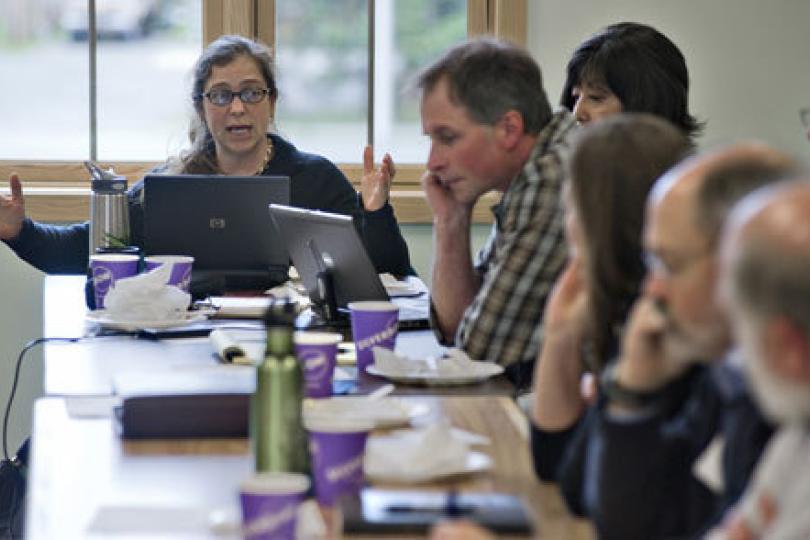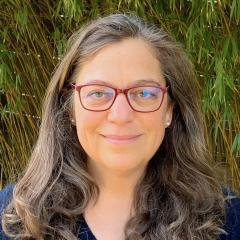Putting Adaptation on the Agenda
What started as an offhand remark by Lara Hansen (1995) to a funder, about how to use some leftover money from a grant, has become the largest national conference on adaptation to climate change. Actually, it is the only national conference on the topic, which is surprising given adaptation’s importance to humans in coming decades and centuries.
Adaptation is defined in a variety of ways by different organizations, but it is essentially the actions taken by governments, businesses and other institutions and individuals to help communities and ecosystems cope with changing climate conditions. It can span activities as diverse as reducing a household’s need for water so that it is prepared for future droughts, to undertaking massive and incredibly expensive measures to protect entire coastlines from erosion in the face of increasingly severe storms.
Next month Hansen expects to welcome 800 to 1,000 people to the 2nd National Adaptation Forum in St. Louis, Missouri, up from the 500 who attended the inaugural event in 2013. While Hansen is excited and encouraged by how many people are now interested in adaptation, she acknowledges that to some extent the concepts and need for adaptation are being given only lip service in the United States.
While other countries push ahead with adaptation projects at all scales, here “there is adaptation-washing every day,” says Hansen. “A large number of state and local plans are not taking on the issue… not really. And there are still so many people who don’t get that climate change will affect them in their daily lives. I’ve even talked to people in New Orleans who aren’t thinking about the likelihood of being under water in the future, beyond the protection affordable levies can offer."
The National Adaptation Forum “has to be a coalition of the willing,” says Hansen, “but you also want people who are unaware of it as a thing to be able to participate."
Adaptation to climate change spent years in the shadow of its big brother, mitigation. Hansen started working on the topic of adaptation in 1998 when, she says, “nobody wanted to talk about it.” The general push then was toward exclusively on mitigation by, for example, switching to low-carbon energy sources, such as renewables, or reforesting to remove more carbon dioxide from the atmosphere. While mitigation is still a critical element of reducing greenhouse gases in the atmosphere, it has become clear that human populations need to adapt to existing difficult and increasingly threatening conditions. Heat waves, droughts, stronger storms, insect outbreaks, reduced agricultural outputs, and more are all here to stay with existing greenhouse gas levels.
In the early 2000s Hansen was working at the World Wildlife Fund (WWF), spending about twenty percent of her time fielding calls and emails from people who were looking for examples of adaptation they could use in their own communities and projects. She says, “I felt like a reference book. Not even a reference librarian, but like an actual manual!”
She had the idea for what eventually became the Climate Adaptation Knowledge Exchange, or CAKE, while she worked at the WWF because she wanted to create a database that incorporated adaptation projects and the linkages between them. At the time, the adaptation community was incredibly small and disparate, and most people did not know others who were working on adaptation in communities outside of their own. Hansen had a handful of case studies she referred to, but could see the potential of a larger database with more funding and examples.
She left the WWF soon thereafter with a Switzer Leadership Grant to launch EcoAdapt, where she is now the Chief Scientist and Executive Director. Hansen immediately started to collect information on coastal and marine adaptation case studies for CAKE. It took her team eighteen months and two thousand interviews to come up with the first 120 case studies.
When asked about her leadership at EcoAdapt, Hansen laughs. “My staff are always telling me that I’m comfortable with a high level of ambiguity,” she says. In fact, she left her career and health insurance at the WWF to start a fledgling non-profit with her husband and a new baby in tow. She says now that getting the Switzer Leadership Award allowed her “to do a crazy thing at EcoAdapt that was very different from what everyone said I ‘should’ be doing.” She says now that she thinks one of her strengths is to remain flexible but unflagging in her conviction of the importance of dealing with climate change.
In the past few years Hansen and her team have evolved EcoAdapt into a hub of information and consulting services around climate change adaptation. Next on her radar is to think about how to test the efficacy of adaptation strategies, since it is important to make sure that the things people are doing actually work as planned. CAKE has continued to grow, and the next step will be to add dashboards to serve, as Hansen says, “customized slices of CAKE” to users. The dashboards will help users conduct searches for information about groups, provide examples of how other groups have solved adaptation challenges, and push out targeted information to users.
“Everyone wants to be involved in adaptation now,” Hansen says, “but at the end of the day someone has to make it all happen. Otherwise it’s just a lovely conversation. I hope people will realize they can help make it happen."

